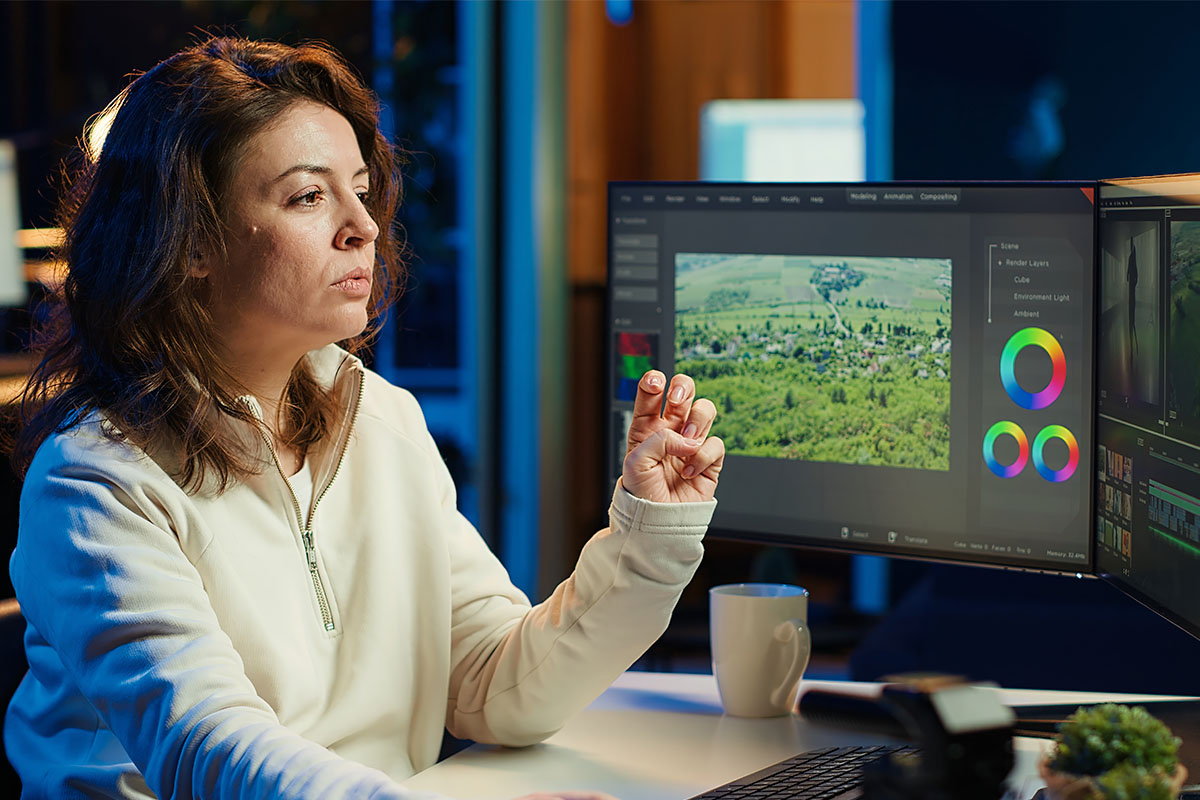
South Africa Animation Studio: Live-Action or Animation?
When you sit down to watch a live-action film, you probably imagine that what you see on screen is entirely real: actors performing in front of actual sets and locations. But the truth is, many films that seem to be pure live-action are in fact heavily reliant on animation techniques. This may sound surprising, but the use of animation in live-action movies has become so seamless that audiences rarely even notice it. Whether it is digital doubles, vast CGI environments, or the previsualisation process, animation is playing an increasingly significant role in the movies we love. In this article, we will explore how animation has worked its way into live-action filmmaking, how it goes unnoticed, and what role a South Africa animation studio can play in this process. Let us take a closer look at the innovative techniques that make it all possible.
The Blurred Line Between Live-Action and Animation
Historically, live-action and animation were two very different forms of filmmaking. Live-action involved real actors performing in physical environments, while animation was created frame by frame, either by hand or digitally. But in recent years, this distinction has become increasingly blurry, especially with the rise of CGI (computer-generated imagery) and other animation techniques that blend flawlessly into live-action films.
Today, many of the visual elements in what we consider live-action films are, in fact, animated. From backgrounds to creatures to entire sequences, animation is often used to fill in the gaps or enhance what is already on screen. This phenomenon is known as “invisible animation”—where animation is used so cohesively that it is hardly noticeable.
If you have ever seen a modern blockbuster and thought, “Wow, this looks incredibly real,” chances are, a South Africa animation studio played a role in making that reality possible, even if you cannot see the work being done. For instance, Mad Max: Fury Road relied significantly on the CGI work of a South Africa animation studio, which created digital doubles and expansive CGI environments that elevated the film’s action sequences.
Case Studies: Animation’s Role in Live-Action Films
1. Digital Doubles and Environments
One of the most significant ways animation is used in live-action films is through the creation of digital doubles and environments. While most films still use real actors and physical locations, CGI allows filmmakers to create stunning digital replacements when needed.
Take, for example, the movie Mad Max: Fury Road. Although the film is renowned for its intense practical effects and real stunts, it also relied on animation techniques. Digital doubles were created for many of the actors, allowing them to perform stunts that would have been too dangerous or impossible in real life. Likewise, vast stretches of desert landscapes were generated digitally, providing the backdrop for the action without ever leaving the studio.
In films like The Avengers, digital doubles are used to create characters and environments that are entirely CGI. Whether it is the Hulk smashing through a building or Iron Man soaring through the sky, these scenes would not be possible without the integration of animation. The possibilities showcased in such films serve as inspiration for a South Africa animation studio, influencing how they approach future projects by demonstrating the potential of blending animation with live-action, all while maintaining the illusion of realism.
2. Previsualisation (Previs) Techniques
Another crucial element in today’s film production is previsualisation (previs). Before a scene is shot, filmmakers can animate sequences in advance to visualise how they will play out. This process allows directors to plan complex shots, camera movements, and action sequences, streamlining production and making sure that everything runs smoothly on set.
Take Mad Max: Fury Road again, for example. Before filming any of the intricate chase scenes, the production team created full animated storyboards to map out the action. This gave them a blueprint to follow, allowing for a more efficient and controlled production process. With the help of advanced previs techniques, filmmakers can simulate an entire sequence in an animated form long before it is filmed on camera.
A South Africa animation studio is integral to this process. By creating high-quality previs, these studios help directors plan and visualise scenes effectively before they are filmed.This is especially important in films that rely on heavy action or complex CGI elements.
3. Deepfake De-Aging Technology
In recent years, deepfake technology has made headlines for its ability to digitally alter a person’s appearance, often making them appear younger. A notable example is in The Mandalorian and The Book of Boba Fett, where the character Luke Skywalker was digitally de-aged using a combination of CGI and motion capture. This allowed the character, originally played by Mark Hamill, to appear as he did in his younger years, enabling him to return to the story without the need for makeup or prosthetics.
The use of this technology involves a blend of live-action footage and animation, resulting in a hyper-realistic look that blends effortlessly with the rest of the film. While deepfake technology is not without controversy, its role in the production of The Mandalorian and The Book of Boba Fett shows how animation techniques can be used to manipulate real actors’ appearances and create a more immersive viewing experience.
For a South Africa animation studio, working with deepfake technology can open up new opportunities for creating digital de-aging, which can be invaluable for directors looking to film a character over time without using traditional makeup techniques.
The Implications for the Film Industry
The integration of animation into live-action filmmaking has far-reaching implications. First, it challenges the traditional perception of both mediums. Animation is no longer seen as something separate or secondary to live-action; instead, it has become an integral part of modern filmmaking, enhancing stories and visuals in ways that were not possible just a few decades ago.
With the ongoing advancements in animation, we can expect to see even more groundbreaking techniques in the future. The line between what is “real” and what is “animated” will continue to blur, making it harder for audiences to distinguish the two. For filmmakers, this opens up new creative possibilities that were once considered impossible. This evolution in filmmaking will require skilled professionals, such as those found in a South Africa animation studio, who can ensure that these techniques are executed flawlessly.
Conclusion
The evolution of animation and CGI in film has reached a point where it is reshaping how stories are told—often in ways we do not even notice. With tools like deepfake technology and cutting-edge CGI techniques, filmmakers can now create worlds and characters that feel as real as the actors performing in them. For a South Africa animation studio, this opens up an exciting playground of possibilities, where the only limit is creativity. These advancements mean that animation is not just for animated films anymore—it is becoming an integral part of every genre, pushing boundaries and blurring the lines between what is real and what is imagined. And as the industry keeps evolving, South African studios are perfectly positioned to take full advantage of these innovations, offering fresh and unique perspectives that will keep audiences on the edge of their seats.
CGI is no longer reserved for the big screen—it can bring something special to your business too. If you’re interested in how animation can work for you, get in touch with us today, and let’s explore the possibilities.
We are a full-service Web Development and Content Production Agency in Gauteng specialising in Video Production, Animation, eLearning Content Development, Learning Management Systems, and Content Production.
Contact us for a quote. | enquiries@soundidea.co.za | https://www.soundideavideoproduction.co.za| +27 82 491 5824 |

